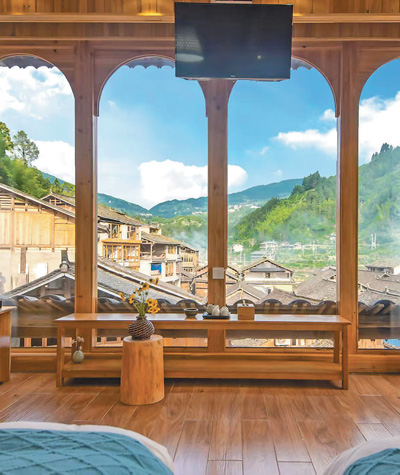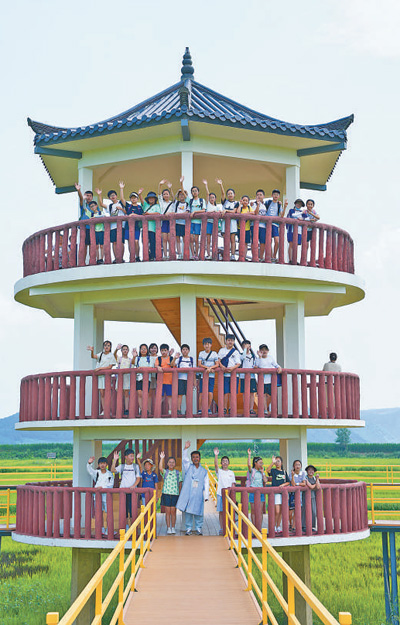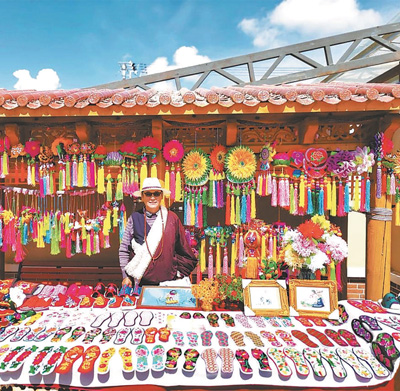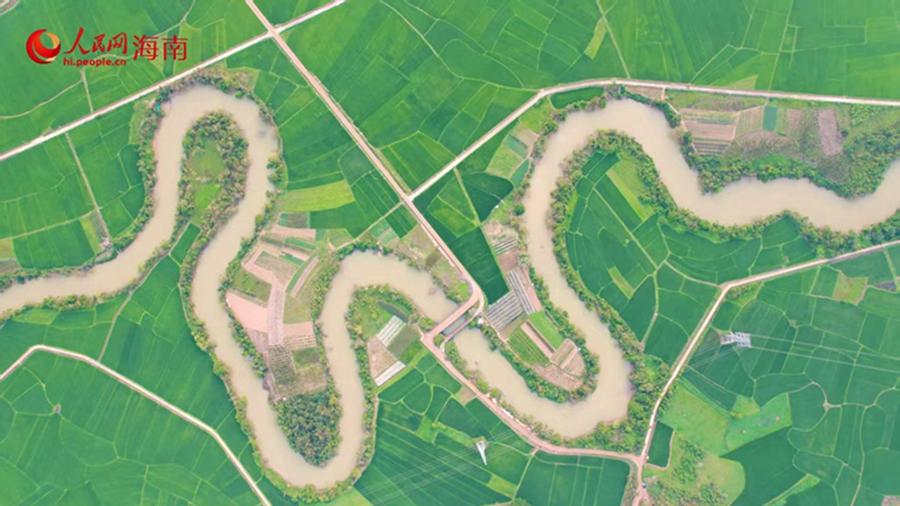Ethnic villages see vibrant cultural and tourism industries
Building on their rich and diverse ethnic cultures, regions across China are actively developing their cultural and tourism industries to drive economic and social development while boosting all-around rural revitalization.
In Zhaoxing Dong village, Liping county, Qiandongnan Miao and Dong Autonomous Prefecture, southwest China's Guizhou Province, Ying Yongxiu invested 2 million yuan ($275,930.6) six years ago to convert her wooden house into a B&B hotel. She has led locals in running the B&B hotel business.

Photo shows a view of Zhaoxing Dong village from villager Ying Yongxiu's B&B hotel in Liping county, Qiandongnan Miao and Dong Autonomous Prefecture, southwest China's Guizhou Province. (Photo courtesy of the publicity department of the Communist Party of China Liping county committee)
Zhaoxing Dong village, established during the Northern Song Dynasty (960—1127), is one of the largest Dong villages in China. As the village's clusters of wooden stilt houses symbolize Dong culture, systematic protection of these traditional houses is essential for preserving the village's ethnic cultural heritage.
"We retained the original appearance of our homes. The overall style of our B&B hotels is compatible with nearby old houses, showcasing distinctive ethnic features," said 38-year-old Ying, adding that these B&B hotels have been favored by tourists.
When Ying's B&B hotel opened in 2019, she hit the jackpot: all 14 guest rooms were almost fully booked for seven months. Her net profit reached 500,000 yuan that year.
"People increasingly appreciate ethnic features and cultural experiences. The number of tourists visiting Zhaoxing Dong village has been increasing year after year, and our decoration style has become a major selling point," Ying said. As business boomed, she hired two employees.
Her success instilled confidence in many villagers, including Lu Hongqin, a village official who followed Ying's example in running a B&B business. "Ying has frequently referred tourists to us, and B&B hotels have become a highlight of tourism in Zhaoxing Dong village," Lu said.
In 2024, the village received 1.02 million tourist visits, with tourism revenue exceeding 1 billion yuan. To date, the village is home to over 320 B&B hotels and more than 50 restaurants, with the per capita annual income exceeding 40,000 yuan. By protecting ethnic culture and developing distinctive industries, more residents are earning a living from tourism and finding paths to prosperity.
In Guangdong village, Dongcheng town, Helong city, Yanbian Korean Autonomous Prefecture, northeast China's Jilin Province, Yang Lina, president of a B&B hotel cooperative, was welcoming tourists in a B&B hotel converted from a rural courtyard.
In recent years, Guangdong village has actively promoted the integrated development of the primary, secondary, and tertiary industries.
With a long history of rice cultivation, Guangdong village's rice was little known to the outside world until then 26-year-old Yang returned home to develop rural tourism in 2011. Beyond distinctive residences, dance performances, and ethnic cuisine, Yang set her sights on the vast fields.

File photo shows tourists on a viewing platform in Guangdong village, Dongcheng town, Helong city, Yanbian Korean Autonomous Prefecture, northeast China's Jilin Province.
Without affecting rice cultivation, Yang built viewing platforms alongside rice paddies and introduced mini trains and rice planting experiences, attracting an increasing number of tourists.
"We share profits with the village collective on a percentage basis, allowing villagers to earn more," Yang said.
Guangdong village has established partnerships with over 500 travel agencies and has been listed as a model for boosting culture and tourism to drive rural revitalization.
Yang has also collaborated with villagers to purchase specialties including rice, rice wine, and spicy cabbage from them to sell online. To date, Yang's online sales have exceeded 10 million yuan.
Jin Jun, a villager, spearheaded the establishment of an organic rice cooperative, inviting agricultural experts to improve rice varieties and standardize seedling cultivation, weeding, fertilization, and other processes to ensure rice quality. Today, the village's rice is exported worldwide.
The integration of agriculture and tourism has become a new engine for increasing villagers' incomes. Guangdong village receives about 500,000 tourist visits annually. The collective economic income of the village has grown from 100,000 yuan 10 years ago to over 1 million yuan last year. In 2024, the per capita disposable income of the village stood at 21,000 yuan, a 3.2-fold increase from 2015.
"As the village develops, it's attracting more young people to return home," said Jin Xian, Party chief of the village.
Located at an average altitude of 3,300 meters, Guoluo Zanggongma village in Shaliuhe town, Gangca county, Haibei Tibetan Autonomous Prefecture, northwest China's Qinghai Province, has been making steady progress in developing modern animal husbandry in recent years.
Last year, three cooperatives in the village managed 64,300 mu (4,286.67 hectares) of grassland, achieving an annual income of about 1.41 million yuan.
In August last year, Gongluo Agricultural and Livestock Products Development Co., Ltd. was established with an investment of 3.5 million yuan in the village. In less than six months, the company's sales approached 200,000 yuan.

File photo shows a scene of a promotion event of agricultural and livestock products, as well as cultural and creative products held in Guoluo Zanggongma village in Shaliuhe town, Gangca county, Haibei Tibetan Autonomous Prefecture, northwest China's Qinghai Province.
This village by Qinghai Lake, once dependent on nomadic herding, has also developed ecological tourism. In 2024, the village's collective economic income exceeded 800,000 yuan, with the per capita income of poverty-alleviated households reaching around 19,818 yuan, a 14.04 percent increase from the previous year.
According to the Party chief of the village, distinctive industries including educational tours on revolutionary culture, specialized tourism, efficient livestock breeding, beer brewing, soilless cultivation and picking, livestock by-product processing, cultural and creative sector are flourishing in the village.
Photos
Related Stories
- Crayfish drive rural vitalization
- Hainan's exotic fruit "window" boosts south China rural revitalization
- GraphicAnalysis: Rural revitalization high on agenda as drive gains momentum
- China to extend, refine policy support for low-income residents, underdeveloped areas
- Murals add color to China's rural revitalization
- China outlines key tasks for rural reforms, revitalization in 'No.1 central document'
- Tech innovation cultivates new productive forces in China's rural revitalization
- China maintains great strides in agriculture, rural vitalization
- China aims to achieve substantial progress in all-around rural revitalization by 2027
- Agricultural innovators contributing to China's comprehensive rural revitalization
Copyright © 2025 People's Daily Online. All Rights Reserved.









